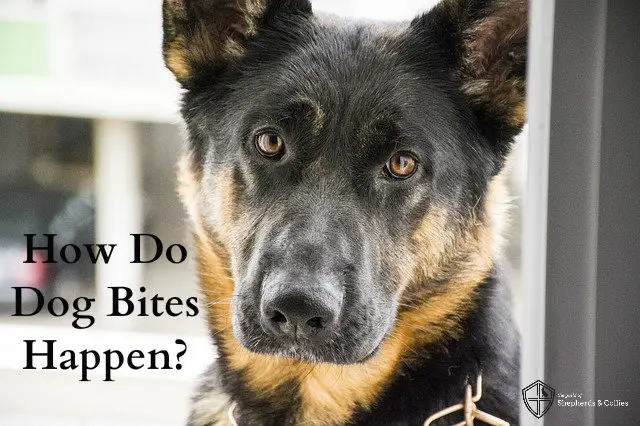How Do Dog Bites Happen?
But He’s Such a “Good” Dog! ... When Dog Bites Happen to Good Dogs.
As you lie on the couch cuddling your sweet dog, I bet you can’t imagine him ever biting someone. But did you know that more than 4.5 million people in the United States are bitten by dogs every single year? Of those who suffer bites serious enough to warrant medical attention (about 800,000 people each year), more than half are children. Kids are also the most likely to suffer severe injuries from dog bites. But for the most part, our dogs are so wonderful and loving, they are part of our families! So, how is it that so many people suffer dog bites?
You might be surprised to learn that the vast majority of dog bites to kids are from known dogs — often their own family dog, or a friend’s, relative’s, or neighbor’s dog. These dogs are generally not snarling, rabid “Cujo” types, but nice dogs. Good dogs.
If you have young kids, you probably enjoy watching them play with your dog in the backyard as they forge a true love of dogs, and create memories that last a lifetime. But take a closer look and something could be brewing beneath the surface.
Take your average “good” dog. I’ve heard so many parents say it: “Our dog is so good with the kids. He lets them do anything to him.” I’m sure you’ve seen it all, too: Kids bear-hugging dogs around the neck, draping themselves over a dog while he’s lying on the floor, and rolling around on the ground, wrestling with their dog. Or, toddlers “riding” a dog or chasing him around the living room pulling on his ears or tail.
Believe it or not, some of these “good” dogs will eventually bite if that type of behavior is allowed to continue indefinitely. Most dogs are not thrilled with hugging (think about it: do dogs hug each other?), although they put up with it. Pulling ears and tails can really hurt, even if many dogs don’t seem to show their discomfort. And wrestling or riding on a dog is just a really bad idea. These kinds of behaviors are setting a dog up for that one day, that one time when they are accidentally hurt or scared, or just plain tired of being chased and poked and tugged.
And that one time the dog might bite. Even a “good” dog. One bad bite to a child could be a death sentence for a dog who was previously friendly and non-aggressive.
Does this mean dogs and kids should never play together? Of course not! Dogs and kids can be the best of friends. Just do your part to make sure they can enjoy a fun relationship that is centered around safety and mutual respect.
Consider these tips:
No kids’ faces in dogs’ faces
Dogs have teeth. Sharp ones. And a bite can happen in an instant. If your dog wanders by and licks your kid on the face, that’s no problem. But don’t let your child routinely stick his face in your dog’s face.
No hugging, especially around the neck
Dogs can feel very threatened by this behavior. It also places the child’s face near the dog’s face, which you want to avoid.
No chasing the dog, especially while screaming or yelling
This can scare your dog or trigger a prey-drive response. If you have a herding dog, you might also need to work on not allowing the dog to chase the kids. It’s tempting for herding breeds to “herd” the kids, nipping at their ankles and legs, but this behavior can really escalate and become a problem.
Respect the dog’s personal space
If your dog is attempting to get away, make sure your child doesn’t back him into a corner or block his exit. Most bites happen from stress and fear; you don’t want your dog to feel trapped.
No wrestling, lying on top of the dog or attempting to ride him
Many dogs will find this uncomfortable or stressful. However, there are some dogs who seek out cuddling together, and even seem to enjoy it when their kids lay on top of them. You know your dog best.
With strange dogs, teach your kids to ask for permission to pet the dog before approaching. And make sure they wait and actually get that permission. Even so, don’t let your kids do too much with strange dogs other than pet them nicely on the shoulder — most dogs prefer a pet on the shoulder, back or chest, as opposed to the face or top of the head. And it’s best to slowly hold out your hand, palm down, to allow the dog to smell you before you touch him.
Dogs and kids can be the best combination when vigilant parents set clear boundaries. Toddlers seem to present the biggest challenge around dogs, so if you have kids under 4, be ready to be on high alert, always making sure your dog feels comfortable and safe. If you can’t supervise, separate! Use baby gates, crates, or put the dog in another room or outside if you are temporarily distracted. Finally, never leave dogs alone with young kids, especially with babies and toddlers. Being proactive will keep your kids safe and your dog safe, ensuring everyone will enjoy their special bond with the family dog.
Article By:
Jackie Brown







